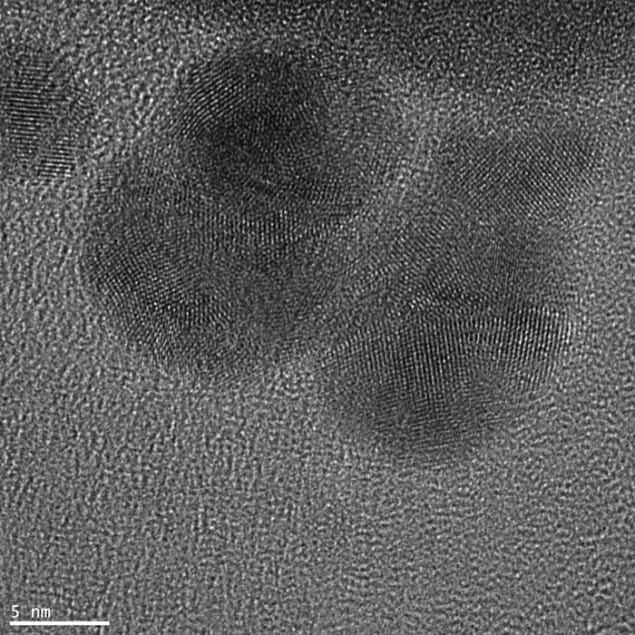
Most materials expand when they are heated up and contract when cooled down – a phenomenon known as positive thermal expansion (PTE). Over the past three decades, however, an increasing number of materials showing the opposite effect – that is, negative thermal expansion (NTE) – have been discovered. Researchers in Portugal and the US say they have now found NTE above the magnetic ordering temperature in magnetic nanoparticles for the first time. The new discovery will be important for making composites from PTE and NTE materials that have zero thermal expansion for use in a host of technology applications.
The researchers, led by João Pedro Araújo, André Pereira and Joao Belo of the University of Porto found the NTE effect in Gd5Si1.3Ge2.7 magnetic nanogranules at low temperatures of between 90 and 150 K and more interestingly, from the point of view of applications, at the room-temperature interval of 260-340 K.
Gd5Si1.3Ge2.7 belongs to the technologically important family of materials R5Six Ge4−x (where R = rare earth). These have been extensively studied since 1997, when researchers discovered the giant magnetocaloric effect in Gd5Si2Ge2. Since then they have also found giant magnetoresistance, spontaneous generation voltage and colossal magnetostriction in this compound. These effects come from the coupling between the magnetic and structural phases in the material, which lead to magnetostructural transitions at a transition temperature TMS.
In the bulk form, these materials show PTE in both the ferromagnetic (T<TMS) and the paramagnetic states (T>TMS).
“A curious story”
“Ours is a very curious story,” says Belo. “In previous experiments on nanoscale Gd5Si1.3Ge2.7, we had already obtained synchrotron X-ray diffraction data as a function of temperature in the 90 to 340 K range in 5 K step intervals. In this early work, however, we were so focused on trying to study the structural transition that we completely overlooked the diffractograms taken at temperatures away from the temperature at which this transition takes place – that is, below 150 K and above 250 K.
“It was only about two years later when we were trying to analyse and understand the negative thermal dependence of the electrical resistivity versus temperature curve of this material that we decided to look more closely at the diffractograms of these low-and high-temperature regions. And that was when we found the NTE and observed how it correlated with the negative thermal dependence of the electrical resistivity.”
This result is particularly interesting since there are no reports of any kind of NTE in Gd5(SiGe)4 materials in their bulk form, he tells Physics World.
Nanoparticles under pressure
The researchers say this particle size-reduction effect comes from the surface pressure of the nanoparticles (which they estimate to be around 11 kbar).
“This intrinsic surface pressure is very much like what happens when a drop of water forms and is present on every nanoparticle,” explains Belo. “This pressure is inversely proportional to the diameter of a nanoparticle so we believe that NTE could also be induced by applying pressure to macroscopic samples of Gd5Si1.3Ge2.7.”
The team hopes that the result will trigger a renewed interest in the study of the thermal expansion of R5(SiGe)4 and magnetic nanoparticles in general. Raman spectroscopy on these materials, for example, could help unveil what changes take place on lattice vibrations at the PTE to NTE transition.

Superinsulating aerogel resists mechanical and thermal shocks
Creating composites with near-zero thermal expansion
NTE materials mixed with a PTE material in composites that have near-zero thermal expansion are particularly useful as temperature-stable thermal contacts in microelectronic and semiconductor devices undergoing thermal cycling operations, says Belo. They might also find use in precision instruments in which any volumetric change induced by temperature variations can cause them to malfunction. Other possible applications include fibre-optic and electro-optical sensors and substrate materials for mirrors in various telescope and satellite applications.
The researchers, reporting their work in Physical Review B, say they are now optimizing their procedure to synthesize controlled-size Gd5(SiGe)4 nanoparticles with different compositions and Si/Ge ratios. “We are also planning high-pressure synchrotron X-ay diffraction experiments to evaluate how size-confinement and pressure affects the atomic structure of these materials and how similar these two effects are.”



